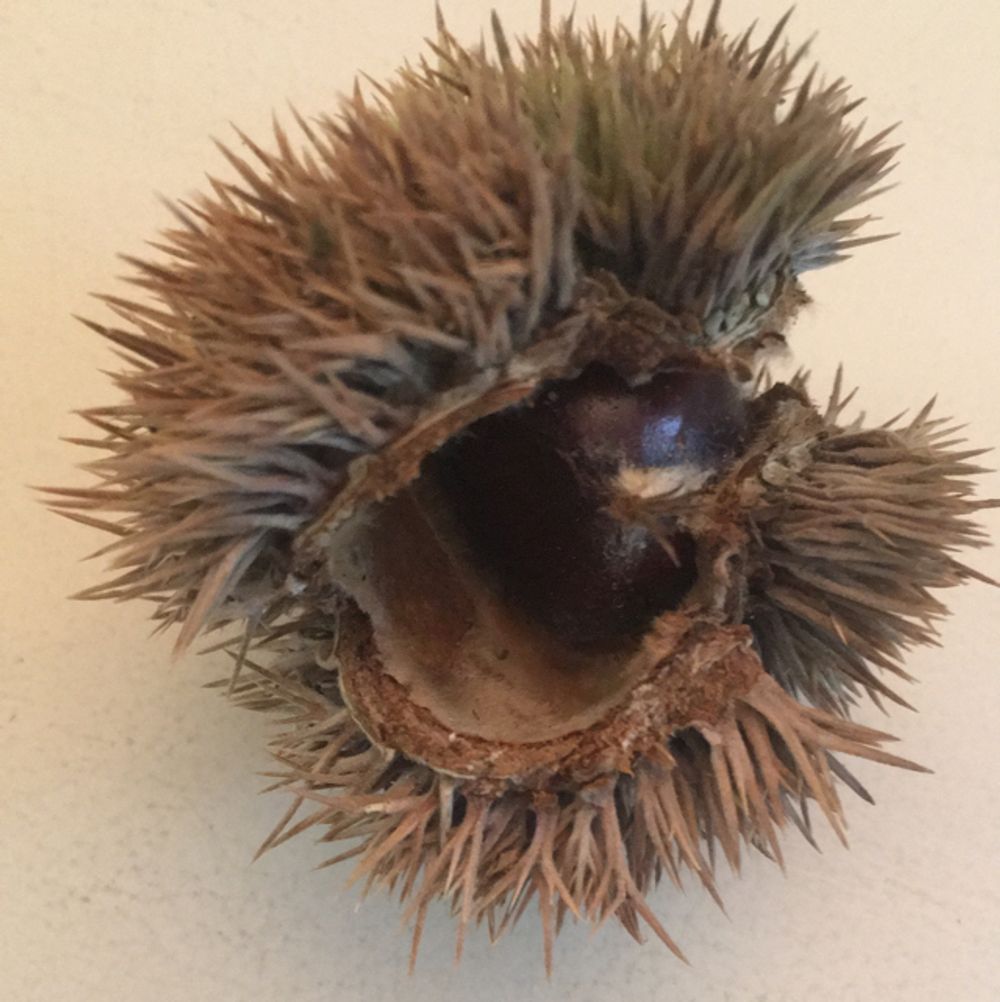American chestnut tree
(American chestnut)

Description
The American chestnut (Castanea dentata) is a large, monoecious deciduous tree of the beech family native to eastern North America. Before the species was devastated by the chestnut blight, a fungal disease, it was one of the most important forest trees throughout its range, and was considered the finest chestnut tree in the world. It is estimated that between 3 and 4 billion American chestnut trees were destroyed in the first half of the 20th century by blight after its initial discovery in 1904. Very few mature specimens of the tree exist within its historical range, although many small shoots of the former live trees remain. There are hundreds of large (2 to 5 ft diameter) American chestnuts outside its historical range, some in areas where less virulent strains of the pathogen are more common, such as the 600 to 800 large trees in northern Lower Michigan. Castanea dentata is a rapidly growing deciduous hardwood tree, historically reaching up to 30 metres (98 ft) in height, and 3 metres (9.8 ft) in diameter. It ranged from Maine and southern Ontario to Mississippi, and from the Atlantic coast to the Appalachian Mountains and the Ohio Valley. C. dentata was once one of the most common trees in the Northeastern United States. In Pennsylvania alone, it is estimated to have comprised 25–30% of all hardwoods. The tree's huge population was due to a combination of rapid growth and a large annual seed crop in comparison to oaks which do not reliably produce sizable numbers of acorns every year. Nut production begins when C. dentata is 7–8 years old. There are several similar chestnut species, such as the European sweet chestnut, Chinese chestnut, and Japanese chestnut. The American species can be distinguished by a few morphological traits, such as leaf shape, petiole length and nut size. For example, it has larger and more widely spaced saw-teeth on the edges of its leaves, as indicated by the scientific name dentata, Latin for "toothed". The leaves, which are 14–20 cm (5.5–8 in) long and 7–10 cm (3–4 in) broad, also tend to average slightly shorter and broader than those of the sweet chestnut. The blight-resistant Chinese chestnut is now the most commonly planted chestnut species in the US, while the European chestnut is the source of commercial nuts in recent decades. It can be distinguished from the American chestnut by its hairy twig tips which are in contrast to the hairless twigs of the American chestnut. The chestnuts are in the beech family along with beech and oak, but are not closely related to the horse-chestnut, which is in the family Sapindaceae. The chestnut is monoecious, producing many small, pale green (nearly white) male flowers found tightly occurring along 6 to 8 inch long catkins. The female parts are found near base of the catkins (near twig) and appear in late spring to early summer. Like all members of the Fagaceae family, American chestnut is self-incompatible and requires two trees for pollination, which can be any member of the Castanea genus. The American chestnut is a prolific bearer of nuts, usually with three nuts enclosed in each spiny, green burr, and lined in tan velvet. The nuts develop through late summer, with the burrs opening and falling to the ground near the first fall frost. The American chestnut was a very important tree for wildlife, providing much of the fall mast for species such as white-tailed deer and wild turkey and, formerly, the passenger pigeon. Black bears were also known to eat the nuts to fatten up for the winter. The American chestnut also contains more nitrogen, phosphorus, potassium and magnesium in its leaves when compared to other trees that share its habitat. This means they return more nutrients to the soil which helps with the growth of other plants, animals, and microorganisms.[
Taxonomic tree:







